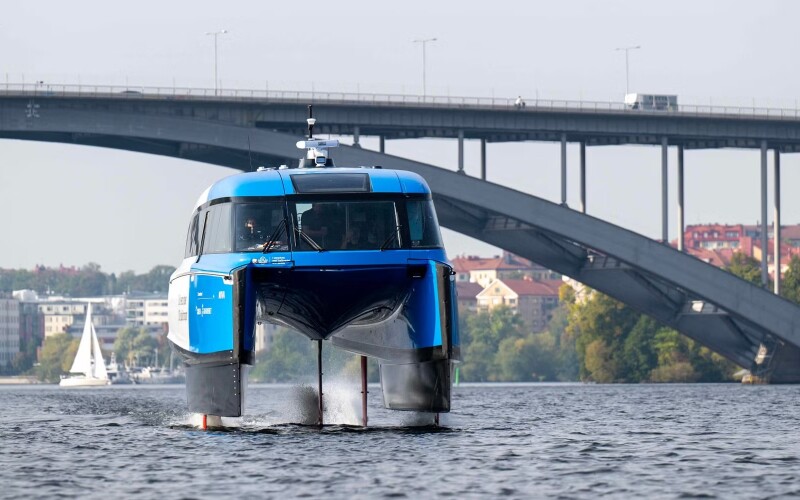Swedish tech company Candela says its P-12 electric hydrofoil ferry will soon resume passenger service around Stockholm, and by May operators Region Stockholm will step up to a new daily schedule.
The 39.2’x14.7’, 30-passenger ferry Nova began operations in Stockholm’s public transport system during autumn 2024, and resumes April 15 with the end of winter ice season.
With low emissions and a cruising speed of 25 knots, the Nova emits 95% less carbon dioxide compared to the conventional diesel-powered ferries Lux and Sunnan, which operate the same route, and uses 84% less energy per passenger-kilometer, according to Candela.
Operator statistics showed autumn departures were fully booked, often with long queues, popularity that operators credit to the hydrofoil service stems from Nova reducing travel time between suburban Tappström and Stockholm City Hall to 30 minutes, compared to about an hour by car or bus.
“Nova is drawing commuters to the other vessels as well. That’s especially exciting, since one of our goals is to show that with fast, comfortable waterborne transport, we can get car commuters to switch to waterborne transport,” said Gustav Hasselskog, CEO and founder of Candela.
With its speed and low wake signature, “the vessel is well-suited to both urban areas, where speed restrictions are typically in place due to conventional ferries causing damaging wake, and sensitive ecosystems,” according to Candela.
“Demonstrating that the technology is mature and fit for demanding public transport use is important. This is the third generation of our foiling technology, and with lessons learned from producing over 100 leisure vessels, we’re scaling up production to meet demand,” says Gustav Hasselskog, CEO and Founder of Candela.
Candela is delivering P-12s to operators in New Zealand, Saudi Arabia and the U.S., where Candela and tour operator FlyTahoe in November announced plans to bring the first hydrofoil ferry to Lake Tahoe on the California-Nevada border. The high-speed vessel will carry passengers on a 30-minute cross-lake route. Driving around the lake often takes over two hours in the winter – but Lake Tahoe never freezes in winter, so the ferry will be an alternative for visitors to the lake’s 14 surrounding ski resorts, the partners said.
“We are incredibly happy that Region Stockholm has enabled us to demonstrate the hydrofoil technology in the city's public transport. We see that waterways in most cities have enormous potential for fast, low-cost, and emission-free transport that can relieve road networks and connect communities. This is just the beginning," said Hasselskog.




